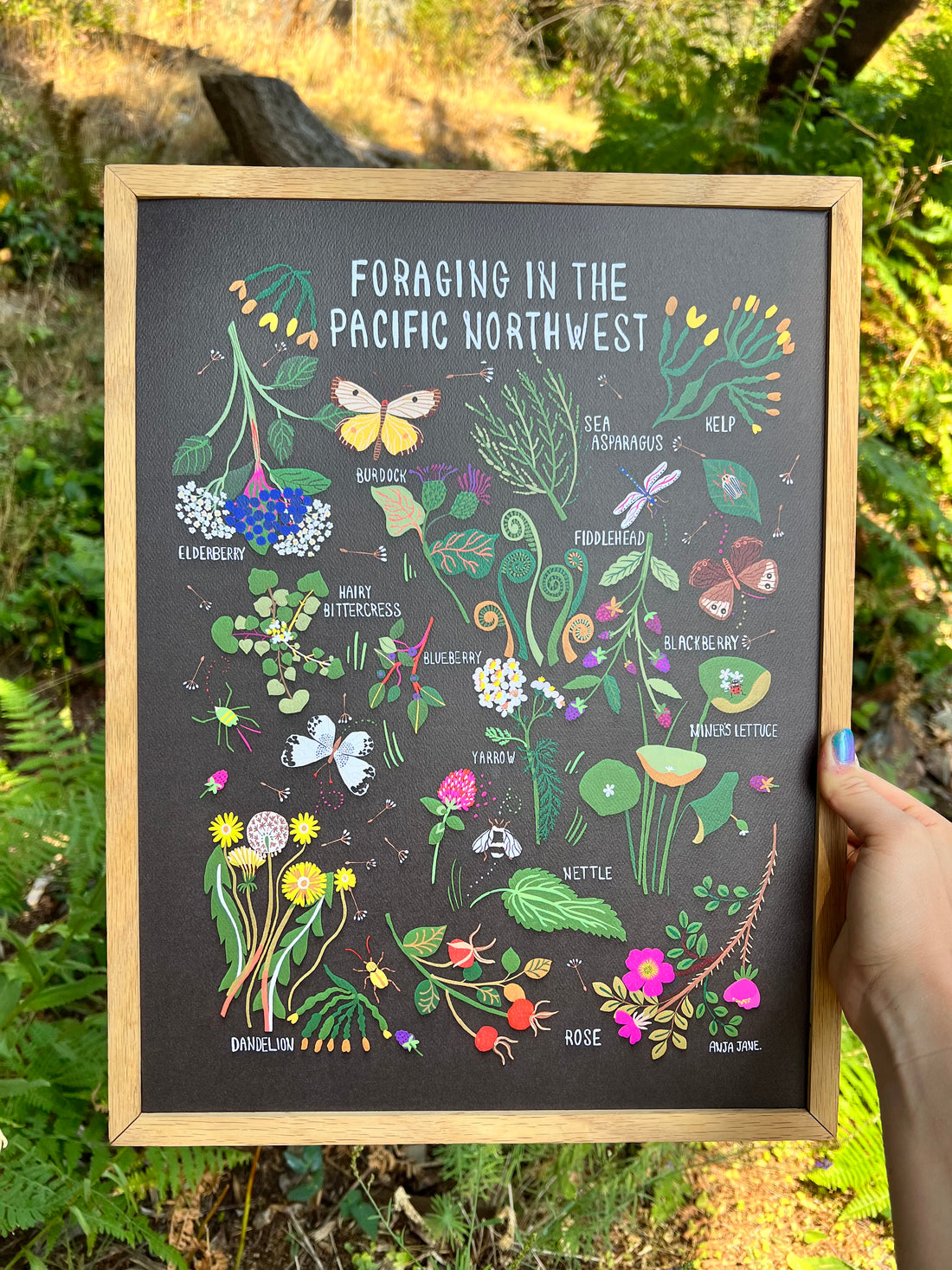
Foraging plants in the wild is a lovely way to add delicious, wholesome foods to your daily meals. As with anything found in the wild, please do your research and know with absolute confidence how to identify and prepare foraged plants before using or consuming. And, if you are in doubt, consult your physician or naturopathic doctor.
Anja's new Foraging in the Pacific Northwest art print showcases some of the flora that can be found in the area that she calls home. Below are some quick facts about each illustrated plant to get you started on your foraging journey.
Edible Plants
Sea Asparagus: (also called “sea beans”) are a delicious, wild plant that can be found near beaches in North America (among other areas around the world!). Simply look it up to find an abundance of incredible recipes.
Tinctures and Teas
Nettle: the leaves of stinging nettle are known to have a multitude of health benefits! Nettle can reduce inflammation and help lower blood pressure. It is not edible raw (I’m sure you have experienced its stinging sensation at one point!), but once dried or cooked, nettle can be turned into tea or added to meals.Other Helpful Plants
Kelp: bull kelp can be found on beaches once the tide is out, and is distinguishable by its large bulb on the end. The bulb and stem can be pickled to make delicious sea-pickles!
Check out the Foraging Print here.
Want to Start Foraging?
The best way to start learning how to forage, is to learn from your local experts. Research in your area for foraging classes, wild plant cooking classes, and forest walks that can help you learn more about which plants you can eat, and which you need to stay away from.
With any wild plant, you should ALWAYS do your research to ensure it is safe to eat. Every body is different! We promise, the effort it takes to learn about foraging is more than worth it; there really is nothing quite like the taste of a wild blueberry, or the coffee-esque bitterness of wild dandelion-root tea.

